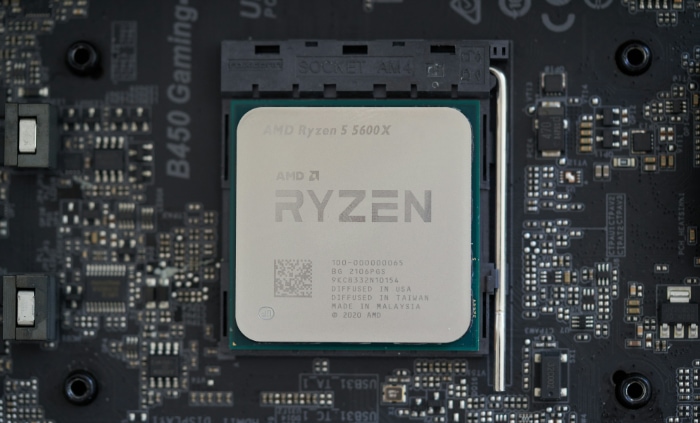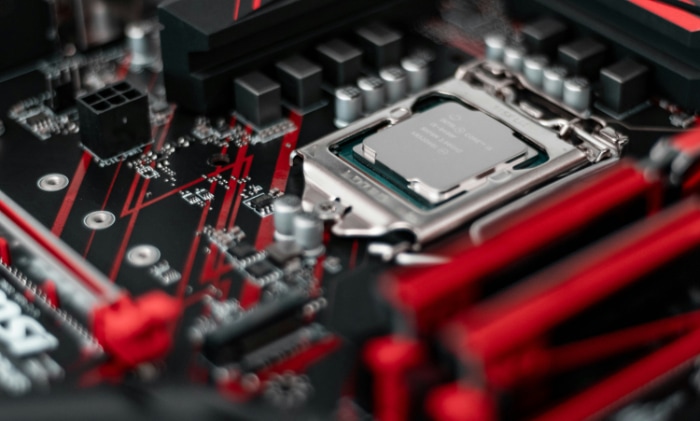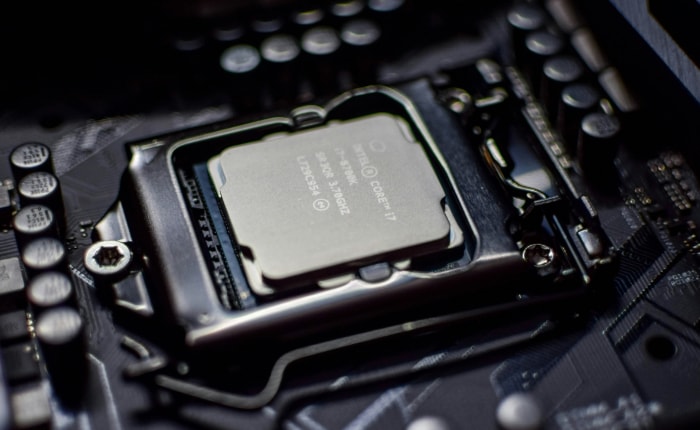What Is a Good Processor Speed? The Right Pick

Diving into the world of computing, the speed of a processor emerges as a crucial element that shapes the performance of both laptops and desktops. Often quantified in gigahertz (GHz), this measure tells us how swiftly a computer’s heart beats, affecting everything from basic tasks to complex operations.
Beyond the simple numbers, a tapestry of factors such as cores, threads, and the interplay with other hardware components determines the real-world effectiveness of a processor.
What Is Processor Speed
Processor speed, measured in gigahertz (GHz), signifies the clock rate at which a computer’s central processing unit (CPU) operates. It represents the number of cycles per second the CPU can execute, influencing how quickly it can process instructions.
A higher GHz number suggests a faster processor, capable of handling more tasks simultaneously or completing individual tasks more rapidly. This basic measure of computational power is a critical consideration when evaluating the performance capabilities of both laptops and desktops.
The Impact of Processor Speed on Computing
While a faster processor can dramatically enhance the performance of both laptops and desktops, it’s not the sole determinant of a device’s overall speed. Processor speed affects how smoothly and swiftly applications run, especially those requiring intensive data processing.
For tasks such as video editing, gaming, or running complex simulations, a higher processor speed can significantly improve efficiency and responsiveness. However, for everyday activities like web browsing, document editing, or streaming, the benefits of a high-speed processor may be less noticeable.
Cores and Threads: Expanding Processor Capabilities
Modern processors extend beyond basic speed metrics, incorporating multiple cores and threads to boost performance. A “core” in a CPU is akin to an individual processor within the processor itself, capable of executing tasks independently.
More cores mean the CPU can manage more operations simultaneously, enhancing multitasking and performance in applications designed to utilize multiple cores.
Threads relate to the ability of a CPU to execute multiple processes concurrently within each core, thanks to technology like Intel’s Hyper-Threading or AMD’s Simultaneous Multithreading.
Essentially, these technologies allow a single core to handle multiple threads, further optimizing performance for multitasking and complex computing tasks.
Typical Processor Speeds in Laptops
Laptops, known for their portability and convenience, feature a wide range of processor speeds tailored to various needs and budgets. Processor speeds in laptops generally range from about 1 GHz for very basic tasks to upwards of 5 GHz in high-performance models.
This spectrum accommodates a diverse set of user requirements, from simple web browsing and document editing to demanding gaming and content creation tasks.
Factors Influencing Laptop Processor Speed Choice
Choosing the ideal processor speed for a laptop involves considering several key factors beyond just the raw speed. These include the intended use, battery life expectations, and the laptop’s ability to dissipate heat.
User Needs
The optimal processor speed largely depends on what tasks the laptop will be primarily used for. Basic tasks like web surfing and document editing can be efficiently handled by lower-speed processors, whereas intensive applications like video editing, 3D rendering, and gaming require higher speeds for a smooth experience.
Battery Life
Higher processor speeds can lead to faster battery depletion. Laptops designed for long battery life might opt for processors that strike a balance between performance and power efficiency, particularly important for users who need mobility without constant recharging.
Thermal Management
Laptops have limited space for cooling solutions, unlike desktops. A processor with a very high speed may generate more heat than the laptop can efficiently dissipate, leading to thermal throttling where the processor speed is reduced to prevent overheating.
Therefore, finding a processor that the laptop’s cooling system can manage is essential for sustained performance.
Processor Speed Examples by Laptop Category
Laptops can be broadly categorized into entry-level, mid-range, and high-end, each with typical processor speeds suited to the category’s typical use cases.
Entry-Level Laptops
These laptops usually feature processor speeds ranging from 1 GHz to around 2.5 GHz. They are designed for basic tasks such as internet browsing, email, and word processing, focusing on affordability and battery efficiency.
Mid-Range Laptops
Mid-range models offer processor speeds from about 2.5 GHz to 4 GHz. These laptops balance performance and price, suitable for a broader range of tasks, including light photo editing and casual gaming.
High-End Laptops
High-end laptops boast processor speeds from 3.5 GHz up to 5 GHz and beyond, equipped to handle demanding applications like professional-grade video editing software, advanced computational tasks, and high-resolution gaming. These models prioritize performance and are often equipped with advanced cooling systems to manage heat.
Processor Speed Range in Desktop Computers

Desktop computers offer a broad spectrum of processor speeds, catering to a wide array of uses from basic computing to intensive, professional-grade tasks. Unlike laptops, desktops can accommodate higher speed processors without as much concern for battery life or thermal limitations, thanks to larger cases that can house more robust cooling systems.
Processor speeds in desktops can range from around 2 GHz for basic tasks to beyond 5 GHz for high-end, performance-oriented models.
Desktop-Specific Considerations for Processor Speed
When selecting a processor for a desktop computer, several key factors specific to desktops play a crucial role in the decision-making process.
Expandability
One of the main advantages of desktops is their expandability. Users can upgrade or add components, including the CPU, to boost performance over time. A desktop with a modest processor speed might serve well initially, especially if there’s an intention or possibility to upgrade as needs evolve.
Cooling Solutions
Desktops can accommodate more effective cooling solutions compared to laptops, ranging from larger air cooling fans to sophisticated liquid cooling systems. This capability allows desktops to run faster processors without overheating, maintaining performance even under heavy loads.
Performance Demands
The desired or required performance level significantly influences the choice of processor speed. Desktops used for everyday tasks may not need the high-speed processors that gaming or professional workstations do, where high frame rates and rapid data processing are essential.
Ideal Processor Speeds for Different Desktop Types
General Use Desktops
For everyday tasks like web browsing, document editing, and streaming, desktops with processor speeds from 2 GHz to 3.5 GHz are typically sufficient. These systems focus on reliability and efficiency for routine activities.
Gaming Desktops
Gaming desktops demand higher processor speeds, usually between 3.5 GHz and 5 GHz, to handle the intense graphics and fast-paced action of modern games. Higher speeds, combined with powerful graphics cards and ample RAM, ensure smooth gameplay and high frame rates.
Professional Workstations
Professional workstations used for video editing, 3D modeling, and data analysis require the highest processor speeds available, often 4 GHz and above. These tasks benefit from fast multi-core processors capable of handling complex calculations and multitasking efficiently.
In these systems, high processor speed is paired with high-capacity RAM, advanced graphics capabilities, and fast storage solutions to handle professional-grade software applications.
Complementing Processor Speed with Cores and Threads
While the speed of a processor measures how fast it can complete a cycle of tasks, the introduction of multiple cores and threads represents a paradigm shift in computing power. This development allows for the simultaneous processing of tasks, enhancing the device’s ability to manage multiple tasks efficiently and effectively.
The Advantages of Multicore Processors
Multicore processors, which house multiple CPU units (cores) on a single chip, have become standard in the computing world. This configuration allows a computer to perform several tasks simultaneously, vastly improving performance for both multitasking and specialized applications.
For instance, while one core processes a video stream, another might run a virus scan, and others handle background tasks, all without impacting the overall user experience.
Enhancing Multitasking and Application Performance
The presence of multiple cores is especially beneficial for software designed to take advantage of parallel processing. Applications like video editing suites, 3D modeling software, and scientific computing programs can distribute their workload across several cores, dramatically speeding up processing times and improving efficiency.
Balancing Cores, Threads, and Speed for Optimal Performance
Achieving the best computing performance requires a balance between the number of cores, threads, and the processor speed. Here’s how these elements interact:
Processor Speed
A higher processor speed means that each core can complete tasks faster, which is beneficial for applications that are not optimized to use multiple cores but still demand quick processing.
Cores
More cores mean that a computer can handle more tasks at once. For users who run many applications simultaneously or use software that supports multicore processing, a higher number of cores can significantly improve performance.
Threads
Threads refer to the maximum number of processes a core can handle simultaneously. Through technologies like hyper-threading, a single core can process two tasks at the same time. This means that a quad-core processor with hyper-threading can handle eight threads, further boosting the system’s multitasking capabilities.
Finding the Right Mix
For general users, a balanced combination of processor speed, cores, and threads ensures smooth performance for everyday tasks. Gamers and professionals working with intensive applications might prioritize higher speeds and more cores to accommodate the demands of their software.
Meanwhile, users focused on multitasking and efficiency may look for processors with more cores and support for additional threads.
Key Processor Features Beyond Speed

While the speed of a processor is a critical factor in determining a computer’s performance, other features play significant roles as well. Cache size, integrated graphics, and power consumption are essential aspects that can greatly influence overall efficiency and capability.
Cache Size
The cache is a smaller, faster type of memory located inside the processor. It stores copies of the data from frequently used main memory locations.
A larger cache enables the processor to access data more quickly, enhancing overall system speed and responsiveness, especially in tasks that reuse the same data or instructions.
Integrated Graphics
Many modern processors come with integrated graphics, which are sufficient for everyday computing tasks such as web browsing, video streaming, and running less demanding games. Integrated graphics eliminate the need for a separate graphics card, reducing power consumption and saving space, making them ideal for laptops and compact desktops.
Power Consumption
Power consumption is crucial, especially in portable devices where battery life is a concern. More efficient processors consume less power, generating less heat and extending battery life.
This efficiency is particularly important in thin and light laptops, where cooling space is limited.
System Components That Affect Overall Performance
A computer’s overall performance is not solely dependent on the processor. RAM, storage, and graphics capabilities also play significant roles in determining how well a computer meets user expectations.
Role of RAM
Random Access Memory (RAM) is critical for multitasking and running memory-intensive applications. More RAM allows a computer to work with more information at the same time, improving efficiency and performance in everything from browsing with multiple tabs open to editing large video files.
Storage Solutions
The type of storage (HDD vs. SSD) can significantly affect a computer’s speed and responsiveness. Solid State Drives (SSD) offer faster read and write speeds than traditional Hard Disk Drives (HDD), leading to quicker boot times, faster file transfers, and overall snappier system performance.
Graphics Capabilities
For tasks that require heavy visual processing, such as gaming, video editing, and 3D rendering, the graphics capabilities of a computer are crucial. A dedicated graphics card (GPU) can provide the necessary power for these intensive tasks, enhancing visuals and rendering times.
Tips for Choosing a Processor
When selecting a processor, consider the overall balance of the system rather than focusing solely on speed.
- Assess your computing needs to determine the right combination of processor speed, cores, and threads.
- Consider how the processor’s cache size and power efficiency might impact your intended use, especially for portable devices.
- Remember the importance of RAM and storage in overall system performance. Opt for SSDs for quicker boot and load times.
- If your tasks are graphics-intensive, ensure the processor’s integrated graphics meet your needs or plan for a dedicated GPU.
Conclusion
Determining the right processor speed for laptops and desktops is a multifaceted process, with numerous factors influencing the final decision. From the basics of processor speeds, measured in gigahertz, to the advanced concepts of multicore processing and the importance of threads, this discussion has highlighted the complexity behind choosing a CPU.
For laptops, considerations extend beyond raw speed to include battery life and thermal management, while desktop users must weigh the benefits of expandability and cooling solutions against their specific performance needs.
It’s clear that personal computing requirements significantly affect what constitutes a “good” processor speed. Whether for basic tasks, gaming, or professional workstations, the ideal CPU will differ.
Moreover, the processor’s role in the overall system performance cannot be overstated. A balanced approach, taking into account cores, threads, cache size, and power consumption, alongside other critical components like RAM, storage, and graphics capabilities, is essential.


